Tamiya 1/48 F4D-1 Skyray
The Douglas F4D-1 Skyray was the first Navy fighter that could exceed Mach 1 in level flight. It was the first carrier-based fighter to hold the world's absolute speed record, and was the last fighter built by the Douglas Aircraft Company. The F4D-1, known to its pilots as the "Ford," was the first successful delta-wing fighter. Many consider its batwing shape to be the most graceful-looking jet fighter ever built.
The aircraft was the result of a 1947 specification calling for a jet-powered carrier-based interceptor capable of intercepting and destroying an enemy aircraft flying at 550 mph at 50,000 feet within five minutes of the alarm being sounded. The design was based on the work of Dr. Alexander Lippisch with high-speed tailless aircraft. Douglas engineers Gene Root and A.M.O. Smith had visited Paris the week following V-E Day, and heard a briefing by Lippisch, then in Allied custody, on the flying-wing interceptors he believed were aviation's future. Smith and Root returned to El Segundo and the legendary Douglas design works run by Edward H. Heinemann, with a treasure trove of German wind tunnel data. Heinemann would receive the Collier Trophy in 1957 for the design of the Skyray.
The original specification called for use of the Westinghouse J-40, perhaps the single worst jet engine ever created, responsible for the under-performance of nearly all of the Navy's second generation of jet aircraft. Fortunately, Douglas took a conservative approach and designed the airframe to be capable of taking another powerplant. With the failure of the J-40, the Skyray received a second lease on life when the decision was made to use the wonderful J-57, one of the best jet engines ever made. With an afterburner, the F4D-1 was the first Navy fighter capable of exceeding Mach 1 in level flight, and had a climb performance of 18,300 feet per minute. On May 23, 1958, the Skyray set a world time-to-climb record of 49,221 feet in 2 minutes 36 seconds, climbing the entire way at 70 degrees, flown by Marine Corps Major Edward N. LeFaivre from NAS Point Mugu. This writer well remembers seeing F4D-1s of VFAW-3 make maximum-performance take-offs at NAS North Island in the early 1960s. Those beautiful jets pulled up into near-vertical climbs, and were a speck in the sky in a matter of moments. In 1954, the airplane set the World's Absolute Speed record at 752.943 mph at an altitude of 1,000 feet over the Salton Sea.
The Skyray was operated by 11 fleet squadrons and two Naval Reserve units, as well as eight Marine Corps squadrons, between 1956-64. VC-3, which later became VF(AW)-3, was the first squadron to equip with the Skyray in April 1956, transitioning completely from the F3D-2 Skynight in 1959. 23-victory World War II ace Commander Eugene Valencia, the last Navy World War II ace to command a fighter squadron, led VF(AW)-3 when it was assigned to NORAD that year, with the squadron averaging one or two actual scrambles and two or three training sorties per day. VF(AW)-3 consistently outperformed USAF interceptor squadrons in scramble time and intercept effectiveness and won NORAD's "best performing unit" trophy, twice. VFAW-3 kept the Skyray until April 1963.
After the Cuban Revolution, VF(AW)-3 sent a detachment of six aircraft ("Detachment Echo") to NAS Key West, Florida, in 1961, where they operated under control of the Continental Air Defense Command (CONAD). The crews were rotated every eight weeks. After Cuba received MiG-21 fighters in January 1962, VF(AW)-3 kept four F4Ds on five-minute alert at all times. Detachment Echo participated in the Cuban Missile Crisis in 1962. That event and the tour VF(AW)-3 served on Taiwan in 1959 during the Second Taiwan Straits Crisis were the only times the F4D-1 came close to seeing actual combat.
As I recall, the first plastic model of the Skyray was a very basic 1/72 kit issued by Hawk in 1954-55, of which I built many. Airfix released a much better F4D-1 in the 1970s, which can still be found. Lindberg Models released a 1/48 kit of the F4D-1 prototype in around 1957; I remember using a lot of putty and bits and pieces of other plastic to turn one of these into an F4D-1 making use of the SuperScale decal sheet then available, in the late 1970s. This Lindberg kit was the only Skyray model available in 1/48 until this kit by Tamiya arrived 41 years later in 1998.
I recently made a reacquaintance with this excellent kit when the LHS put out several Tamiya kits obtained in an estate sale, at the original price of $27.00. I decided to make it straight out of the box, since it includes an excellent decal sheet for a VF(AW)-3 Skyray.
The kit is typical Tamiya: easy to assemble. It can be assembled with the wings folded or spread. Cockpit detail is sufficient, though I decided I would assemble this kit with the canopy closed, so as not to break the beautiful lines of the Skyray. I put a large fishweight in the nose, which guaranteed nose-sitting, and assembled the tailerons in the up position, which is how most Skyrays sat when on the ground with the hydraulics turned off.
I used Gunze-Sangyo Light Gull Grey and Gloss White, with some minimal post-shading of the Light Gull Grey. As I recall, the VF(AW)-3 airplanes were kept in immaculate condition.
I utilized the kit decals. They are typically Tamiya-thick, but go down with a minimum of fuss under a couple coats of Micro-sol.
I gave the model a coat of Xtracrylix Clear Flat on the Light Gull Grey, and Xtracrylix Clear Satin over the white and the blue vertical fin and spine. I then attached the two 600-gallon drop tanks, the Zuni pods and the NORAD pod. I left off the Sidewinders as they are not the correct sub-type for this period.
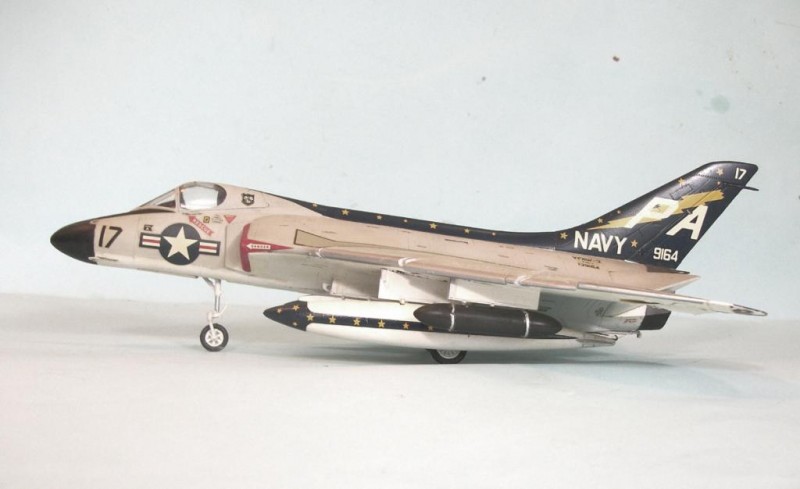
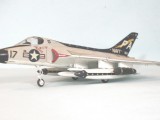
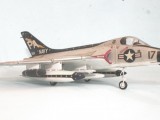
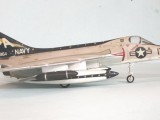
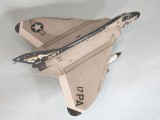
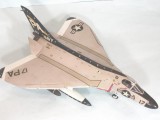
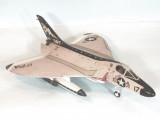
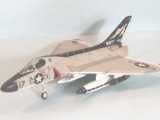
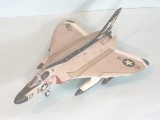
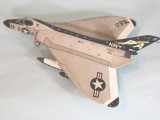
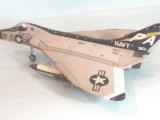

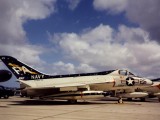
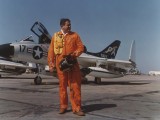
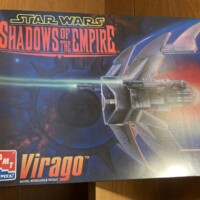
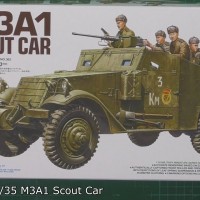
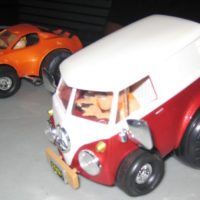
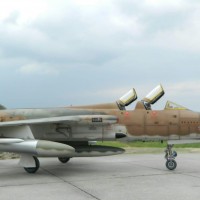
Hi Tom, we see too many of these which is a shame ,it reminds me of a delta winged Hawker Hunter ,really nice looking aircraft and a nice build.
N.
TOM ! SORRY , I meant to type we DON'T see too many of these which is a shame...
If typos were a hanging offense, we'd all be dangling from trees (especially with the "help" we get from auto-mistake). 🙂
Looks great. I have the same kit and was wondering about the tail decals. It looks like they snuggled down around the nooks and crannies very well. I was thinking of painting the insignia blue portion then applying the stars individually. I don't really want to do that if the decals work.
If you don't already have it, Killer Rays is a very nice book on the subject. The chapter on the Westinghouse J40 and subsequent GE J57 development is very detailed. (As is the description of the use of the Skyray as a testbed for the J79.) There is also info on the F5D Skylancer.
Very fine job Tom!
The decals work. Took a couple applications, and then slicing them toward the end over certain places where there were air bubbles, but all looks fine in the end.
It looks very nice, Tom (as usual), I've also got one of these kits in my (very small) stash. The part that worried me is the curve on the rear of the canopy, did you just mask this when you painted the upper part grey?
Thanks, George
Not a problem to mask. I use Tamiya Tape, which will snuggle around any thing or any shape.
Nice clean build. My late uncle built a flying model of the SkyRay back in the late 1950's powered by a ducted fan engine, it was so futuristic to a 10 year old kid. To me any delta wing plane (especially the F4D) look timeless in its design. Classic workmanship Tom!
great looking build
beautiful
You are right about the lines Tom, a graceful looking plane.
Nice one Tom, well done.
Tom,
I love it. This is a great scheme for the "Ford" and really brings out it's character. I could watch these things all day take off and land on BHR. This is a great kit and you have done a great job with it.
That's very nice Tom! I have the same kit, stalled about half-way through at the moment, planning the same scheme and markings. I saw a comment by a pilot once, by someone I can't recall, that if the "Ford" had been available, it would've waxed the MiG-15s in Korea with ease.